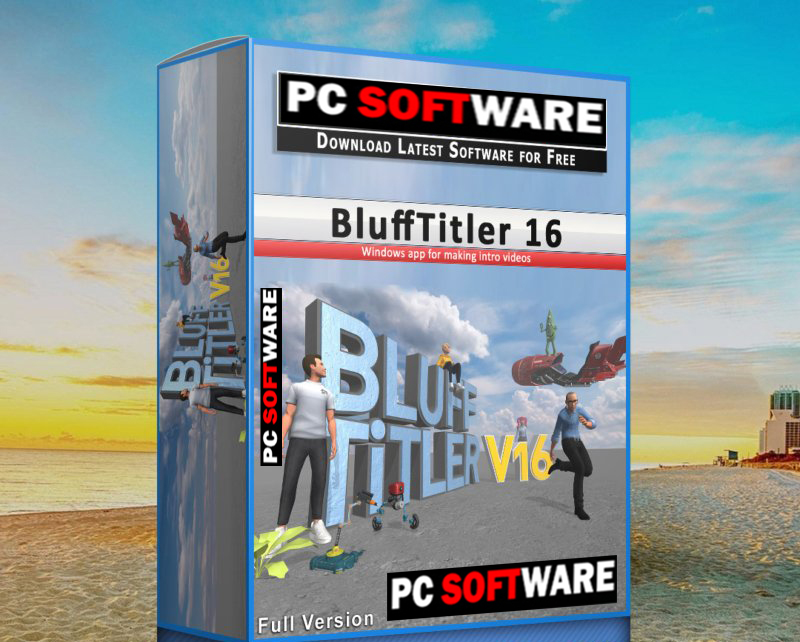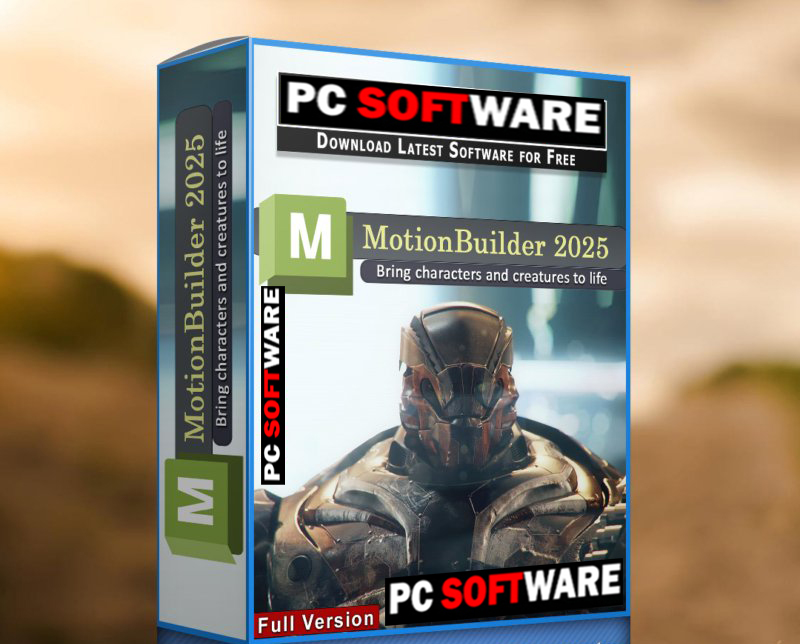3D Animation is a document title that focuses on the creation and implementation of three-dimensional animated content. This form of animation is widely used in various industries, including film, gaming, advertising, and virtual reality. It involves the process of creating lifelike objects and characters through computer-generated imagery (CGI) techniques. With its ability to bring visuals to life and enhance storytelling, 3D Animation has become an essential tool for captivating audiences and delivering immersive experiences. The intricate detailing, realistic movements, and visual effects achieved through this technique make it a popular choice for creating visually stunning and engaging content.
Thank you for reading this post, don't forget to subscribe!The document title is 3D Animation. The desired tone is formal. The desired length is 3-4 sentences. The keywords to include are 3D Animation.

Adobe Animate 2024 Free Download
Adobe Animate 2024 new and updated version for Windows. It is full offline installer standalone setup of Adobe Animate 2024 Free Download for compatible version of Windows. Program was checked and installed manually before uploading by our staff, it is fully working version without any problem.

BluffTitler 16 Free Download
BluffTitler 16 new and updated version for Windows. It is full offline installer standalone setup of BluffTitler 16 Free Download for compatible version of Windows. Program was checked and installed manually before uploading by our staff, it is fully working version without any problem.

Autodesk MotionBuilder 2025 Free Download
Autodesk MotionBuilder 2025 new and updated version for Windows. It is full offline installer standalone setup of Autodesk MotionBuilder 2025 Free Download for compatible version of Windows. Program was checked and installed manually before uploading by our staff, it is fully working version without any problem.

Autodesk Maya 2025 Free Download
Autodesk Maya 2025 new and updated version for Windows. It is full offline installer standalone setup of Autodesk Maya 2025 Free Download for compatible version of Windows. Program was checked and installed manually before uploading by our staff, it is fully working version without any problem.
Creating a 3D animation involves a detailed process that combines art, technology, and storytelling. Here’s a breakdown of the key details involved in creating a 3D animation:
1. Concept and Pre-production:
Before diving into the 3D animation process, it’s important to plan everything out. This phase includes:
- Story Concept and Script:
- Create a story or concept for the animation. Write a script or outline the key scenes, character actions, and dialogues if any.
- Decide on the length, target audience, and tone of the animation (fun, educational, cinematic, etc.).
- Storyboard:
- A storyboard is a series of sketches or images that show key scenes and actions of the animation.
- This helps visualize how the animation will unfold and ensures you have a clear idea of camera angles, character movements, and timing.
- Animatics:
- This is a rough version of the animation, where you combine your storyboard with timing and sound to get a sense of pacing and flow.
2. 3D Modeling:
The first step in actual production is to create the 3D models of the characters, environments, and props that will appear in the animation.
- Character Modeling:
- Design and model the characters in 3D software (e.g., Autodesk Maya, Blender, ZBrush).
- Create a wireframe model first, then refine it with details like textures, clothing, and facial features.
- Environment and Prop Modeling:
- Design the 3D environments (e.g., interior rooms, outdoor landscapes) and props that the characters will interact with.
- Models can be created from scratch or based on real-world references.
- Texturing:
- Add textures to the models to make them appear more realistic (skin texture, fabric, metal surfaces).
- This involves painting or applying texture maps, such as diffuse maps (base color), normal maps (surface detail), and specular maps (reflective properties).
- UV Mapping:
- Unwrap 3D models into 2D space to apply textures correctly. UV mapping is essential to ensure that textures align properly with the 3D surfaces.
3. Rigging:
Once the models are created, they need to be rigged to allow for movement. Rigging is the process of creating the bones, joints, and control systems for characters or objects.
- Character Rigging:
- Build a skeleton with bones and joints that define how the character moves.
- Add control handles for animators to pose and animate the character easily.
- For facial expressions, you may create facial rigs or blend shapes.
- Object Rigging:
- Props or mechanical objects also need rigs to enable movement (e.g., a door that opens, or a car that drives).
4. Animation:
This is where the magic happens! Animation is the process of bringing the 3D models to life.
- Keyframe Animation:
- The animator sets specific keyframes at important moments in the animation timeline, and the computer fills in the motion between these keyframes (called in-betweening or interpolation).
- The animator focuses on posing characters and objects to create fluid, believable movement.
- Principles of Animation:
- Key principles like timing, easing, squash and stretch, and anticipation are applied to create dynamic and lifelike animations.
- Motion curves (graph editor) are often used to smooth out the animation, adjusting how the character moves between keyframes.
- Motion Capture (optional):
- Sometimes, motion capture is used to record real-world human movements and apply them to a 3D character.
- This provides more realistic and nuanced movements, especially for complex human actions.
5. Lighting:
Lighting sets the mood and tone of the animation.
- Types of Lights:
- Key Light: Main light source that illuminates the scene.
- Fill Light: Softens shadows created by the key light.
- Back Light: Creates a highlight or silhouette effect around characters or objects.
- Ambient Light: General light that affects the entire scene.
- Lighting Techniques:
- Experiment with different lighting setups to create mood and depth.
- Use light sources to focus the viewer’s attention on specific parts of the scene.
6. Camera Work:
Camera angles, movements, and depth are key to storytelling.
- Camera Angles:
- Decide on the camera angles for each scene. Close-ups, wide shots, or high/low angles can all convey different emotions or emphasize certain elements of the scene.
- Camera Movement:
- You can animate the camera to follow the action or create cinematic shots (e.g., pans, zooms, tracking shots).
- Smooth, well-timed camera movement adds a professional touch to the animation.
7. Simulation:
Simulations are used for effects like cloth movement, hair, water, smoke, fire, and more.
- Cloth and Fabric Simulations:
- Simulating how fabric moves and reacts to wind or a character’s movements can add realism.
- Particle Effects:
- Fire, smoke, dust, or sparkles can be created using particle systems to make scenes feel more dynamic.
- Fluid Simulations:
- For water, liquids, or any kind of fluid movement, physics-based simulations are employed.
8. Rendering:
Rendering is the process of generating the final 2D images or frames from the 3D scene.
- Render Settings:
- Choose the appropriate resolution and quality for the render. Higher quality typically takes longer to render.
- Decide on the render engine (e.g., Arnold, V-Ray, RenderMan) based on the desired look and output.
- Render Passes:
- Breaking down a render into passes (e.g., diffuse, shadows, reflections, ambient occlusion) can make post-production easier.
- Each pass can be rendered separately and combined in compositing.
9. Compositing and Post-production:
Once the animation is rendered, compositing and post-production refine the final look.
- Compositing:
- Combine different render passes, tweak colors, add visual effects, and correct lighting issues.
- Software like Adobe After Effects or Nuke is often used to integrate all elements together.
- Sound and Music:
- Add sound effects, background music, and voiceovers if necessary. The sound helps enhance the emotional impact of the animation.
- Color Grading:
- Color grading adjusts the color tone and style to give the animation a consistent look.
10. Exporting:
Finally, you export the animation to a suitable format for its intended use.
- Video Format: (e.g., MP4, MOV)
- Resolution: Choose the right resolution based on the platform (1080p, 4K, etc.).
- Compression: Export in a way that balances quality and file size.
Software Tools for 3D Animation:
- Modeling and Animation: Autodesk Maya, Blender, 3ds Max, Cinema 4D.
- Texturing and Painting: Substance Painter, Photoshop.
- Rendering: Arnold, V-Ray, Redshift.
- Compositing: After Effects, Nuke, Fusion.
- Sound Editing: Adobe Audition, Audacity.
Tips for Beginners:
- Start Simple: Begin with basic projects like animating simple objects or characters before tackling complex scenes.
- Learn the Basics: Focus on understanding the principles of animation first—this will make your work much more appealing.
- Practice and Patience: 3D animation is time-consuming, and mastering it takes consistent practice.
